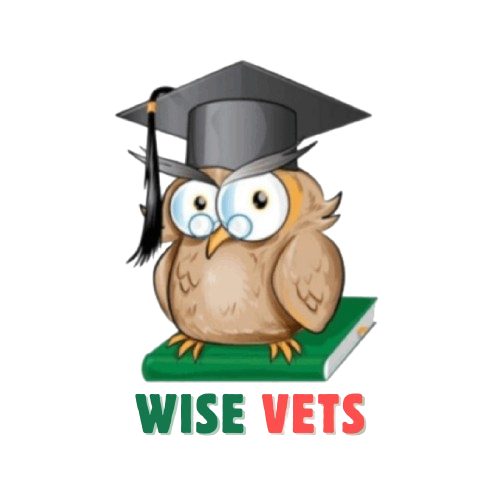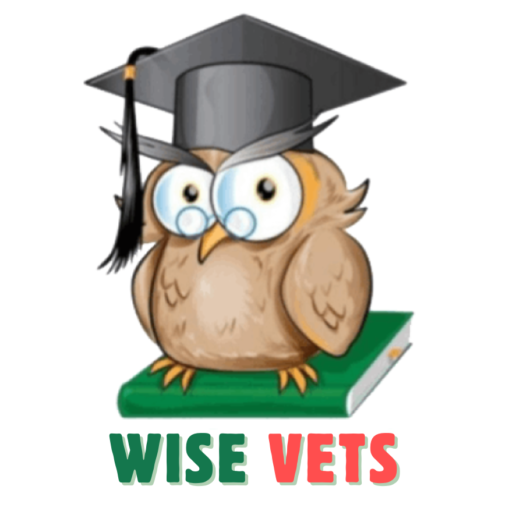Evolution of Veterinary Medicine
Advancements in Animal Healthcare
Over the years, the field of veterinary medicine has seen significant advancements that have greatly improved the health and longevity of animals. From the development of vaccines to new surgical techniques, these advancements have saved countless lives and enhanced the quality of life for pets, livestock, wildlife, and zoo animals. For instance, vaccines for diseases such as feline leukemia virus, rabies, distemper, and parvovirus have been pivotal in disease prevention.
Pharmaceuticals have also played a crucial role. Treatments for conditions like heartworm, cancer, and hip dysplasia have been developed, allowing animals to live longer and healthier lives. The introduction of advanced surgical techniques has made it possible to treat previously untreatable conditions, further solidifying the importance of veterinary medicine in animal healthcare.
Impact of Veterinary Research
Veterinary research is the backbone of advancements in animal healthcare. It not only benefits animals but also has significant implications for human health. Federal laws, such as the U.S. Animal Welfare Act (AWA), mandate that new medicines undergo animal testing to ensure their safety and efficacy before they can be used in human clinical trials (Tulane University).
The Tulane National Primate Research Center (TNPRC) is dedicated to the humane care and use of animals in research. They follow the principles of reduction, refinement, and replacement in animal studies, ensuring ethical considerations are met. The U.S. Department of Agriculture (USDA) enforces strict standards, and Institutional Animal Care and Use Committees oversee the humane treatment of animals in research.
Animal research has led to groundbreaking discoveries, including treatments for various diseases. For example, the development of heartworm treatments and cancer therapies has been instrumental in improving animal health. These advancements highlight the critical role of veterinary research in both animal and human medicine.
| Advancements | Impact |
|---|---|
| Vaccines for Feline Leukemia, Rabies, Distemper, Parvovirus | Disease Prevention |
| Treatments for Heartworm, Cancer, Hip Dysplasia | Improved Animal Health |
| Advanced Surgical Techniques | Enhanced Quality of Life |
For more information on the educational paths and specializations within veterinary medicine, visit our pages on veterinary course and veterinary doctor course. If you’re interested in the diverse practice settings and specialized fields, check out our article on veterinary services and specializations.
The evolution of veterinary medicine continues to make strides, ensuring that animals receive the best possible care through ongoing research and technological advancements.
Veterinarian vs. Veterinary Technician
Understanding the distinctions between veterinarians and veterinary technicians is crucial for anyone interested in veterinary medicine. Although both roles are integral to animal healthcare, they have different responsibilities and educational requirements.
Roles and Responsibilities
Veterinarians are responsible for examining animals to assess their health and diagnose problems. They use various diagnostic tools such as physical examinations, blood work, radiography, and pathology (Animal Family Veterinary Care). They also perform surgeries, prescribe medications, and provide emergency services such as treating bites or scratches. Veterinarians are skilled at operating medical equipment like x-ray machines, ultrasound devices, and CT scanners.
| Task | Veterinarian |
|---|---|
| Health Assessment | Yes |
| Diagnosis | Yes |
| Surgery | Yes |
| Prescribe Medications | Yes |
| Emergency Services | Yes |
Veterinary technicians, also known as registered or licensed veterinary technicians (RVT/LVT), support veterinarians by performing various clinical tasks. They are not authorized to diagnose or prescribe medications but can provide guidance on a pet’s overall wellness and offer general advice and triage (Vetster). They assist in surgeries, conduct lab tests, and handle medical equipment under a veterinarian’s supervision.
| Task | Veterinary Technician |
|---|---|
| Health Assessment | Yes (under supervision) |
| Diagnosis | No |
| Surgery Assistance | Yes |
| Prescribe Medications | No |
| Emergency Services | Yes (under supervision) |
Education and Licensing
The educational paths for veterinarians and veterinary technicians differ significantly.
Veterinarians must complete a Doctor of Veterinary Medicine (DVM) degree from an accredited veterinary college. This typically involves four years of undergraduate education followed by four years of veterinary school. After obtaining their DVM, they must pass a licensing examination to practice.
Veterinary technicians usually require an Associate’s degree in veterinary technology, which can be obtained from a vet science college. This program generally lasts two years. After completing their degree, they must pass a state or national exam to become a registered or licensed veterinary technician (RVT/LVT).
| Criteria | Veterinarian | Veterinary Technician |
|---|---|---|
| Degree | Doctor of Veterinary Medicine (DVM) | Associate’s in Veterinary Technology |
| Duration | 8 years (4 undergrad + 4 veterinary school) | 2 years |
| Licensing Exam | Yes | Yes |
| Continuing Education | Required | Required |
Both veterinarians and veterinary technicians must meet continuing education requirements to maintain their licenses. This ensures they stay updated with the latest advancements in veterinary science and animal studies.
Understanding these roles and their distinct educational paths helps clarify the different ways professionals contribute to the field of veterinary medicine. Whether aspiring to become a veterinary doctor or a veterinary technician, both career paths play a vital role in animal healthcare.
Journey to Becoming a Veterinarian
Educational Path
Embarking on the journey to become a veterinarian involves a structured educational path. Typically, it takes around eight years to become a licensed veterinarian. This includes four years of undergraduate studies followed by four years of veterinary school (Inspira Advantage). However, the duration can vary with some programs allowing completion in as few as three years (Ross University School of Veterinary Medicine).
| Stage | Duration | Description |
|---|---|---|
| Undergraduate Studies | 4 years | Students typically pursue a Bachelor’s degree in a related field such as Biology, Animal Science, or Chemistry. |
| Veterinary School | 4 years | Combines coursework with clinical training to earn a Doctor of Veterinary Medicine (DVM) degree. |
Most veterinary schools, including top veterinary science colleges, require the completion of prerequisite courses in biology, chemistry, physics, and mathematics. After undergraduate studies, aspiring veterinarians must pass the GRE or MCAT to gain admission to veterinary school.
During veterinary school, the curriculum covers various subjects including anatomy, physiology, pharmacology, and animal behavior. Clinical rotations in the final years provide hands-on experience in diagnosing and treating animals.
For those seeking additional training, a year-long internship can be pursued post-graduation. This internship offers mentorship and specialized training, preparing veterinarians for general practice or advanced specialty training.
Specializations in Veterinary Medicine
Veterinary medicine offers a wide array of specializations, allowing veterinarians to focus on specific areas of interest. There are 41 distinct specialties within the field. Pursuing a specialty can extend the time needed to become a veterinarian. For instance, specializing in reptiles and amphibians may require an additional six years of schooling before earning certification.
Some common veterinary specializations include:
- Internal Medicine: Focus on diagnosing and treating complex medical conditions in animals.
- Surgery: Specialize in performing surgical procedures on animals.
- Dermatology: Focus on skin-related issues in animals.
- Emergency and Critical Care: Provide urgent care to animals in life-threatening conditions.
- Exotic Animal Medicine: Specialize in treating non-traditional pets like birds, reptiles, and small mammals.
| Specialization | Additional Training | Description |
|---|---|---|
| Internal Medicine | 3-4 years | Diagnose and treat diseases affecting internal organs. |
| Surgery | 3-4 years | Perform surgical procedures on various animal species. |
| Dermatology | 3 years | Treat skin, ear, and allergy-related conditions. |
| Emergency and Critical Care | 3-4 years | Provide urgent and intensive care for critically ill animals. |
| Exotic Animal Medicine | 4-6 years | Specialize in the care of non-traditional pets. |
These specializations often require additional residency training and certification exams. Veterinarians interested in specializing should consider the time and commitment needed to achieve expertise in their chosen field.
By understanding the educational path and various specializations in veterinary medicine, aspiring veterinarians can better prepare for their careers. For more detailed information on veterinary courses, visit our page on veterinary course.
Job Outlook and Salary
Understanding the job outlook and salary expectations is crucial for anyone considering a career in veterinary medicine. This section delves into the growth prospects and earning potential for veterinarians.
Growth in Veterinary Employment
The employment of veterinarians is projected to grow significantly over the next decade. According to the U.S. Bureau of Labor Statistics (BLS), there is an estimated 20% growth in veterinary employment from 2022 to 2032. This rate is much faster than the average for all other occupations. The BLS also projects approximately 5,000 job openings per year during this period, driven by the need to replace workers who transfer to different occupations or exit the labor force (Inspira Advantage).
The growing pet population and advancements in veterinary science are key factors contributing to this positive job outlook. Increased awareness about pet health and wellness means that more pet owners are seeking veterinary services, further boosting employment prospects.
Median Pay for Veterinarians
The earning potential for veterinarians varies based on factors such as specialization, location, and experience. According to the BLS, the median annual pay for veterinarians was $103,260 in 2022 (Animal Family Veterinary Care). This is lower compared to the median pay for physicians, which is equal to or greater than $208,000 per year.
For a clearer picture of veterinary salaries, here is a breakdown of median annual pay for different roles within the veterinary field:
| Role | Median Annual Pay ($) |
|---|---|
| General Veterinarian | 103,260 |
| Board-Certified Specialist | 187,000 |
| New Veterinary Graduate | 103,800 |
Figures courtesy Wikipedia
Veterinarians working in private practice, especially those with board certifications, tend to earn higher salaries. For example, private practice associate veterinarians with board certification earned a mean of $187,000 as per the last AVMA Report on Veterinary Compensation published in 2018.
For aspiring veterinarians, it’s important to explore various specializations in veterinary medicine to understand how different fields can impact earning potential. Additionally, prospective students can visit our articles on veterinary college and veterinary doctor course for more information on educational paths.
Challenges in the Veterinary Profession
The veterinary profession, while rewarding, comes with its own set of challenges. Among the most significant are stress and burnout, along with alarmingly high suicide rates.
Stress and Burnout
Stress is a critical issue facing the veterinary profession. According to the 2020 Merck Animal Health Veterinarian Wellbeing Study, 92% of 2,874 respondents identified stress as a primary concern. Chronic stress affects veterinarians by reducing situational complexity and leading to more rigid problem-solving methods.
Burnout is another pervasive issue. The overall burnout rate among veterinarians in the past five years has ranged from 27% to 89%, with significant variation across different cohorts. The impact of burnout is profound, as a study of 7,396 people under 45 years of age showed a 35% increased risk in mortality with each one-unit increase in total burnout score (NCBI).
Here is a summary of the burnout rates:
| Burnout Rate | Percentage |
|---|---|
| Low | 27% |
| High | 89% |
Veterinarians must navigate these challenges while maintaining high standards of care for their animal patients. For more insights on veterinary education, visit our veterinary college page.
High Suicide Rates
The suicide rate among veterinarians is alarmingly high. Veterinarians are approximately twice as likely as other healthcare professionals and up to four times as likely as the general U.S. population to die by suicide. This statistic highlights the urgent need for mental health support within the profession.
To better understand the depth of this issue, consider the following data:
| Population Group | Likelihood of Suicide |
|---|---|
| General U.S. Population | 1x |
| Other Healthcare Professionals | 2x |
| Veterinarians | 4x |
Addressing these challenges requires a multi-faceted approach, including better mental health support, stress management training, and industry-wide awareness.
For more detailed information on the vet profession’s demands, check out our pages on veterinary science and vet medicine.
Veterinary Medicine History
Understanding the history of veterinary medicine provides valuable insight into the evolution of animal healthcare. This section explores the origins of veterinary practice and the development of veterinary schools.
Origins of Veterinary Practice
The term “veterinary” is derived from the Latin word “veterinae,” meaning “working animals.” The title “veterinarian” was first used in print by Thomas Browne in 1646 (Wikipedia). The practice of veterinary medicine, however, dates back much further. Early records show that ancient civilizations in Egypt, Greece, and Rome had individuals who specialized in treating animals.
| Era | Key Development |
|---|---|
| Ancient Egypt | Evidence of animal care in hieroglyphics |
| Ancient Greece | Writings of Hippocrates on animal health |
| Ancient Rome | Veterinary care for cavalry horses |
Development of Veterinary Schools
The formal education and training of veterinarians began in the 18th century. The first veterinary college was established in Lyon, France, in 1762 by Claude Bourgelat. This institution marked a significant milestone in the professionalization of veterinary medicine.
| Year | Milestone |
|---|---|
| 1762 | First veterinary college in Lyon, France |
| 1844 | Royal College of Veterinary Surgeons established in the UK |
| 1879 | First US veterinary school founded |
The establishment of these institutions solidified veterinary medicine as a recognized profession. Today, veterinary schools and colleges continue to play a crucial role in advancing animal healthcare. For more information on the educational path to becoming a veterinarian, visit our section on veterinary science and vet science colleges.
The evolution of veterinary schools has also led to the diversification of specializations within the field. Modern veterinary schools offer a range of specialized courses, from small animal care to exotic animal medicine. To learn more about the various specializations, check out our article on veterinary course and veterinary doctor course.
By understanding the origins and development of veterinary medicine, one can appreciate the strides made in animal healthcare and the continued importance of this profession. For those interested in pursuing a career in veterinary medicine, exploring the history and advancements of the field can provide a solid foundation for their educational journey.
Veterinary Services and Specializations
Veterinary medicine offers a wide array of services and specializations tailored to meet the diverse needs of various animal species. This section delves into the diverse practice settings and specialized fields within veterinary medicine.
Diverse Practice Settings
Veterinarians work in a multitude of environments, each presenting unique challenges and opportunities. They provide medical care to a broad spectrum of animals, ranging from household pets to exotic species. Here are some common practice settings:
- Animal Hospitals and Clinics: Primary care facilities where veterinarians diagnose and treat illnesses, perform surgeries, and provide preventive care.
- Laboratories: Veterinarians conduct research and diagnostic testing to advance animal health and safety.
- Farms and Ranches: Providing care for livestock, ensuring their health and productivity.
- Zoos and Wildlife Parks: Caring for a variety of exotic species, focusing on conservation and rehabilitation.
- Educational Institutions: Teaching future veterinarians and conducting research to advance veterinary science.
- Government Agencies: Monitoring public health, controlling the spread of zoonotic diseases, and ensuring food safety.
According to the U.S. Department of Labor, 12% of workers in the veterinary services profession reported a work-related injury or illness in 2016. Common hazards include zoonotic diseases, bites, scratches, and exposure to hazardous drugs.
Specialized Veterinary Fields
Veterinary medicine encompasses numerous specialized fields, allowing veterinarians to focus on specific areas of interest. Here are some notable specializations:
- Small Animal Practice: Focuses on the care of pets such as dogs, cats, rabbits, and other small mammals.
- Large Animal Practice: Specializes in the health and treatment of livestock, including cattle, horses, and sheep.
- Exotic Animal Medicine: Deals with the care of non-traditional pets and wildlife, including reptiles, birds, and amphibians.
- Veterinary Surgery: Involves performing surgical procedures to treat injuries, diseases, and congenital conditions.
- Veterinary Dermatology: Focuses on skin-related issues in animals, including allergies, infections, and autoimmune diseases.
- Veterinary Oncology: Specializes in the diagnosis and treatment of cancer in animals.
- Veterinary Ophthalmology: Deals with eye-related conditions and diseases in animals.
- Veterinary Anesthesiology: Focuses on pain management and anesthesia during surgical and medical procedures.
| Specialization | Focus Area |
|---|---|
| Small Animal Practice | Pets such as dogs, cats, and rabbits |
| Large Animal Practice | Livestock like cattle, horses, and sheep |
| Exotic Animal Medicine | Non-traditional pets and wildlife |
| Veterinary Surgery | Surgical procedures |
| Veterinary Dermatology | Skin-related issues |
| Veterinary Oncology | Cancer diagnosis and treatment |
| Veterinary Ophthalmology | Eye-related conditions |
| Veterinary Anesthesiology | Pain management and anesthesia |
Veterinary professionals can explore these specializations through advanced education and certification programs. For more information on veterinary education paths, refer to our section on the journey to becoming a veterinarian.
Veterinary medicine offers a dynamic and rewarding career with diverse opportunities in various practice settings and specialized fields. Whether working in a clinic, conducting research, or providing care in a zoo, veterinarians play a crucial role in ensuring the health and well-being of animals. For those interested in pursuing a career in this field, explore the various veterinary courses and programs available at vet science colleges.
Animal Research in Medicine
Importance of Animal Studies
Animal research plays a crucial role in the field of veterinary medicine, contributing significantly to advancements in animal healthcare. Through rigorous scientific studies, researchers have developed vaccines and treatments that have saved countless animal lives. For example, vaccines for feline leukemia viruses, rabies, distemper, and parvovirus have been successfully created through animal studies, as well as treatments for heartworm, cancer, and hip dysplasia.
Federal law mandates that new medicines undergo testing in animals to ensure their safety and efficacy before clinical trials involving humans can be conducted. This requirement underscores the essential role that animal research plays in the development of new medicines (Tulane University). The results from these studies not only benefit animals but also contribute to overall medical knowledge, aiding in the development of treatments that can be applied across species, including humans.
Here is a table summarizing some key advancements in veterinary medicine facilitated by animal research:
| Medical Advancement | Benefit |
|---|---|
| Feline Leukemia Virus Vaccine | Prevents fatal disease in cats |
| Rabies Vaccine | Protects animals and humans from rabies |
| Heartworm Treatment | Saves dogs from heartworm disease |
| Cancer Treatments | Increases survival rates in pets |
| Hip Dysplasia Treatments | Improves mobility and quality of life |
Ethical Considerations
The ethical considerations surrounding animal research are a crucial aspect of veterinary medicine. Ensuring the humane treatment of animals used in research is paramount. The principles of reduction, refinement, and replacement, proposed by Russell and Burch in 1959, are widely adopted in animal research to minimize the number of animals used and to enhance their welfare (Tulane University).
The U.S. Animal Welfare Act (AWA) establishes strict standards for the care and use of laboratory animals in research. This act is enforced by the U.S. Department of Agriculture (USDA), and research facilities must adhere to these regulations. Additionally, Institutional Animal Care and Use Committees (IACUCs) oversee the humane treatment of animals in research settings (Tulane University).
Ethical guidelines ensure that:
- Reduction: The number of animals used in research is minimized.
- Refinement: Procedures are refined to cause the least harm and distress to animals.
- Replacement: Alternatives to animal use are sought whenever possible.
For more information on the ethical aspects of animal studies, visit our section on animal studies.
By adhering to these ethical principles, veterinary researchers can continue to make significant strides in animal healthcare while ensuring the welfare and humane treatment of the animals involved. This balance is essential for maintaining public trust and advancing the field of veterinary science.






